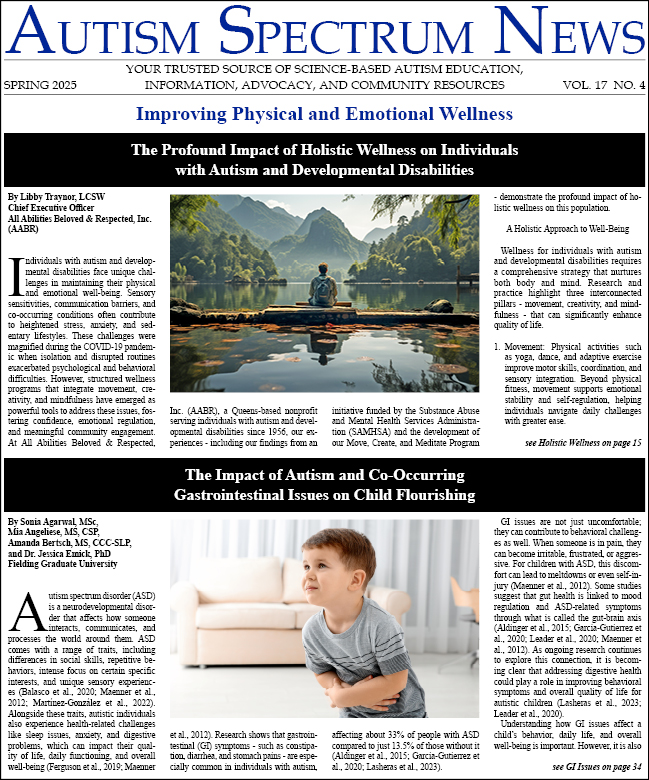-
Autism, Epilepsy, and Seizures: How to Recognize the Signs and Administer Basic First Aid
The purpose of this information is to offer general information on Autism and Epilepsy and the co-condition as well as the types of seizures and basic first aid recommended by the Epilepsy Foundation. This information is taken from Seizure Recognition and First Aid, a publication of the Epilepsy...
-
The Big Sigh
This is one of those days. I feel it the moment I open my eyes. I instantly loathe that I am awake. I fall into an old habit of calculating how many hours I will have to reasonably be out of my bed before I can crawl back into it without having to feign illness or apologize for not returning a...
-
A Person-Centered Collaborative Approach to Achieving Best Outcomes for Autistic Individuals with Co-Occurring Conditions
Autism Spectrum Disorder (ASD) is characterized by the presence of persistent deficits in social communication and social interaction across multiple contexts as well as restrictive, repetitive behavior, interests, or activities (American Psychiatric Association, 2013). Many individuals with ASD...
-
Sensory Processing Differences and Autism
In 2013, the fifth edition of the Diagnostic and Statistical Manual of Mental Disorders (DSM-5) included for the first time sensory reactivity within the diagnostic criteria for autism. The DSM-5 describes three categories of sensory differences: Sensory hyperreacitivty is an...
-
Ehlers-Danlos Syndrome and Its Comorbidities as a Co-Occurring Health Issue in Autistic People
Ehlers-Danlos Syndrome (EDS) occurs in as many as 8% of autistic individuals with even a higher percentage that may have hypermobility spectrum disorders (HSD) (Cederlof et al., 2016, Kindgren et al., 2021). This estimate is low since EDS is more commonly diagnosed in females (Castori, 2012), who...
-
The Prevalence of Comorbidities in Autism: Consideration of Comorbidity in Intervention and Treatment Response
“If you have met one person with autism, you have met one person with autism.” In this quotation, Dr. Stephen Shore, an autistic professor of special education, refers to the unique and varied experience the autism spectrum can be for those individuals who experience it. Autism is an...
-
Diagnosing Depression in Autistic Individuals
This is the first of two articles about depression in people with autism. Part 2 is The Art and Science of Treating Depression in Autism. This article discusses topics that may be upsetting to some people. The National Suicide Prevention Lifeline provides free, confidential support 24/7 at 1...
-
The Art and Science of Treating Depression in Autism
This is the second of two articles about depression in people with autism. Part 1 is Diagnosing Depression in People with Autism. Thanks to research, we know more about depression in children and adults with autism than we used to know. Scientists have studied the rates of depression, risk...
-
Autism and the Gut: Co-Occurring Gastrointestinal Challenges and Psychosocial Factors
Autism is a complex spectrum of behaviors and other distinguishing characteristics across individuals, for which our understanding of continues to unfold. Alongside it’s well documented social and sensory related symptoms, autism also regularly co-occurs with a host of medical complications that...
-
Autism and Its Many Comorbidities: Conditions, Deficits, and Challenges
There is a popular and common saying within the autism community that “when you’ve met one person with autism, you’ve met one person with autism.” It becomes clear that this is true when one considers the variety of conditions which occur comorbidly with ASD. Being on the autism spectrum is...




